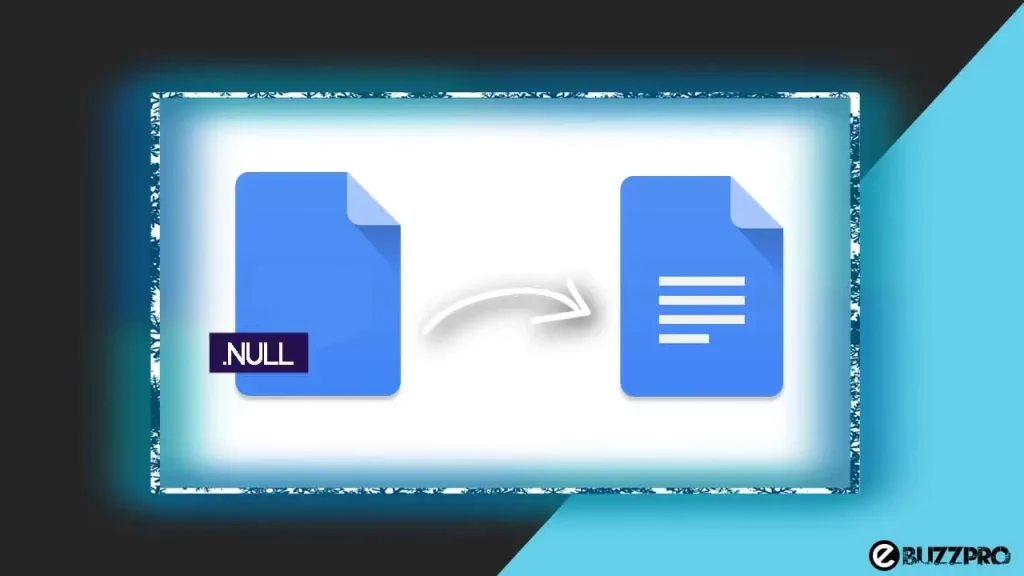Way to Open Null File – Hello friends! Welcome to the eBuzzPro.com blog. And in today’s article we will know that “How to Open Null File on Android, iPhone, Windows”? Friends Null Files often puts people in trouble. In such a situation, users sometimes also use null file converter.
[quads id=1]
But the method does not always work. Because there are many files like JPEG, PDF or Excel files in your mobile or computer. So suddenly many times .Null extension starts showing. Due to which people have many problems in opening these files. So let’s know how to open these null files?

Also Read – How to View System Apps on Android 11?
What is a Null File?
Friends, a Null File or .Null Extension file is a file that has been encrypted by Null Virus. Or say that these files are a form of Ransomware Malware. You must have ever noticed that any file kept in your smartphone, iPhone or laptop suddenly shows like a virus. And the extension of that file shows .Null.
[quads id=1]
And many times when you open such Null Files in your PC or Computer, and your computer does not recognize this file extension. So it shows the message “Windows cannot open this file: example.null To open NULL file, Windows needs to know which program you want to use to open it…”.
Description for this block. Use this space for describing your block. Any text will do. Description for this block. You can use this space for describing your block.
However, let me tell you that this .Null Files has not been designed at all to be opened by the users. But users search “null file opener online” and “null file viewer online” to open these files on the internet. So let us tell you how you can open these .Null extension files on your PC, Laptop, Smartphone or iPhone?
Also Read – How to Run Disk Cleanup in Windows 11?
How to Open Null File on Android?
Friends, many times you download some files from the internet to your Android device, but those files have .null extension. Or say that that file looks like a virus in your Android File Manager. In such a situation, if you also want to open .Null File in your Android phone, then follow the steps given below carefully.
- First of All Download a File Manager if Your Phone Haven’t.
- Now Go to Downloads Folder, Where Your .Null File Available.
- Now Tap on Null File to Open it.
Note – If Your Device Supports .Null Files, Then It will Open in The Corresponding App.
- Now If Your Android Device Not Supporting, Then Go to Play Store.
- Here Search “NULL” and Download and Install It on Your Phone.
- Now You Can Open .Null File in Your Android Phone.
[quads id=1]
Also Read – How to Flush and Reset The DNS Cache in Windows 10?
How to Open Null File on iPhone (iOS)?
- First of All Open File App in Your iPhone or iPad.
- Now Go to Folder, Where Your .Null File Available.
- Now Tap on Null File to Open it.
Note – If Your Device Supports .Null Files, Then It will Open in The Corresponding App.
- Now If Your Android Device Not Supporting, Then Go to Apple App Store.
- Here Search “NULL File Viewer” and Download and Install It on Your iPhone.
- Now You Can Open .Null File in Your iPhone or iPad.
How to Open Null File in Windows?
Friends, if any file was kept in your computer or laptop. And now those files have changed to .Null File. And when you want to open this Null file, it shows “windows can’t open this file” error message. So understand that that file has now been corrupted by the virus.
But now you are wondering how to open that Null File in Computer or PC? So there are many ways to do this. But below I have told you some steps, you can follow them to open Null File.
[quads id=1]
- First of All Open File Manager on Your PC.
- Now Find a NULL File in Question in Windows OS File.
- Next Try to Open It with Double Click.
Note – If NULL File is Not Opened in an Application and You Instead get a “Windows Can’t Open a File” Error Message.
- Now Search “Null File Opener” on Google or Any Other Search Engine.
- Next Download and Install It and Now You Can Open NULL File on Your PC.
Conclusion – Friends, you have got this “How to Open Null File on Android, iPhone, Windows” How was the article? Do tell us by commenting below. And if you like this post, please share it as much as possible.